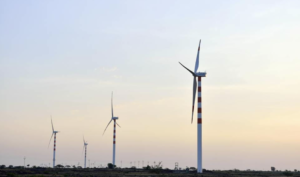New Delhi: The Central Pollution Control Board (CPCB) data from 2021–2025 shows that Delhi’s air pollution levels during Diwali 2025 surged to dangerous highs, with PM₂.₅ concentrations averaging 488 µg/m³ post-Diwali. Over the five-year analysis, data shows a consistent Diwali-related pollution spike, with PM₂.₅ values typically doubling or tripling during the festival night and persisting through the next day. Firecracker emissions remain the dominant cause of Delhi’s short-term air quality collapse during the festive period. The analysis has been published by ‘Climate Trends’.
Impact of Stubble Burning on Delhi’s PM2.5: Comparative Analysis (October 2024 vs 2025)
| Date | Count_Punjab | Count_Haryana | Delhi PM2.5 |
| 01-10-2024 | 32 | 10 | 68.38 |
| 02-10-2024 | 19 | 24 | 71.19 |
| 03-10-2024 | 10 | 8 | 58.39 |
| 04-10-2024 | 3 | 7 | 62.22 |
| 05-10-2024 | 7 | 19 | 45.14 |
| 06-10-2024 | 4 | 40 | 46.24 |
| 07-10-2024 | 41 | 36 | 52.75 |
| 08-10-2024 | 17 | 29 | 73.32 |
| 09-10-2024 | 30 | 14 | 68.33 |
| 10-10-2024 | 57 | 39 | 51.62 |
| 11-10-2024 | 51 | 44 | 60.74 |
| 12-10-2024 | 121 | 111 | 74.79 |
| 01-10-2025 | 5 | 5 | 45.91 |
| 02-10-2025 | 5 | 2 | 47.29 |
| 03-10-2025 | 7 | 2 | 36.79 |
| 04-10-2025 | 24 | 10 | 66.78 |
| 05-10-2025 | 7 | 10 | 66.84 |
| 06-10-2025 | NaN | NaN | 32.49 |
| 07-10-2025 | NaN | 8 | 22.80 |
| 08-10-2025 | 1 | 7 | 36.61 |
| 09-10-2025 | 4 | 6 | 40.75 |
| 10-10-2025 | 26 | 9 | 63.79 |
| 11-10-2025 | 14 | 6 | 74.02 |
| 12-10-2025 | 16 | 5 | 63.66 |
- Background and Context
This analysis examines the relationship between stubble burning in Punjab and Haryana and PM2.5 levels in Delhi during the first twelve days of October for two consecutive years — 2024 and 2025.
The year 2025 was marked by massive floods in Punjab and Haryana, which significantly disrupted agricultural activities and crop residue management. This climatic anomaly provides a unique lens to understand how changes in stubble burning influence Delhi’s air quality.
- Yearly Comparison of Fire Counts and Air Quality
| Metric | 2024 (Oct 1–12) | 2025 (Oct 1–12) | Change (2025 vs 2024) |
| Total Stubble Burning – Punjab | 392 | 105 | ↓ 73.2% |
| Total Stubble Burning – Haryana | 387 | 70 | ↓ 81.9% |
| Total Combined Fire Counts | 779 | 175 | ↓ 77.5% |
| Average Delhi PM2.5 (µg/m³) | 60.79 | 51.48 | ↓ 15.5% |
- Key Observations
- Sharp Decline in Stubble Burning (Flood Impact)
- The 77.5% reduction in total stubble burning events in 2025 can be directly attributed to the massive floods in Punjab and Haryana.
- Flooding delayed harvest cycles, waterlogged fields, and reduced dry residue availability, making it physically impossible for many farmers to conduct residue burning.
- This resulted in an involuntary but drastic suppression of fire activity across both states.
- Corresponding Improvement in Delhi’s Air Quality
- The drop in stubble burning coincided with a 15.5% reduction in Delhi’s average PM2.5 levels during the same period.
- This natural experiment underscores a strong causal link between biomass burning intensity in upwind states and air quality deterioration in the National Capital Region.
- Essentially, fewer fires led to cleaner air, even without major policy or enforcement changes.
- Daily Correlation Patterns
2024 Trends: Strong Correlation
| Date | Combined Fire Count | Delhi PM2.5 (µg/m³) | Observation |
| 12 Oct 2024 | 232 (Highest) | 74.79 (Highest) | Highest burning day = Highest pollution day |
| 08 Oct 2024 | 46 | 73.32 | High PM2.5 aligns with high burning |
| 06 Oct 2024 | 44 | 46.24 | Exception due to meteorological factors |
Interpretation: 2024 shows a clear positive correlation between stubble burning intensity and PM2.5 levels.
2025 Trends: Weaker Correlation
| Date | Combined Fire Count | Delhi PM2.5 (µg/m³) | Observation |
| 11 Oct 2025 | 20 | 74.02 (Highest) | High PM2.5, but low fire count |
| 10 Oct 2025 | 35 (Highest) | 63.79 | Moderate correlation |
| 07 Oct 2025 | 8 | 22.80 | Low PM2.5 matches low burning |
Interpretation: In 2025, daily correlation weakens as non-agricultural sources (vehicular, industrial, dust) dominate residual pollution levels.
- Key Insights and Takeaways
- Flood-Induced Air Quality Improvement:
The 2025 floods served as an unplanned intervention, drastically lowering fire activity and proving how strongly stubble burning impacts Delhi’s air quality. - Persistent Base Pollution:
Even with fires curtailed, Delhi’s PM2.5 remained above 50 µg/m³, revealing a significant background load from other sources — traffic, industries, and dust resuspension. - Policy Relevance:
The data underscores that reducing farm fires alone can yield immediate benefits, but structural air quality gains require multi-sectoral emission control beyond agriculture.









